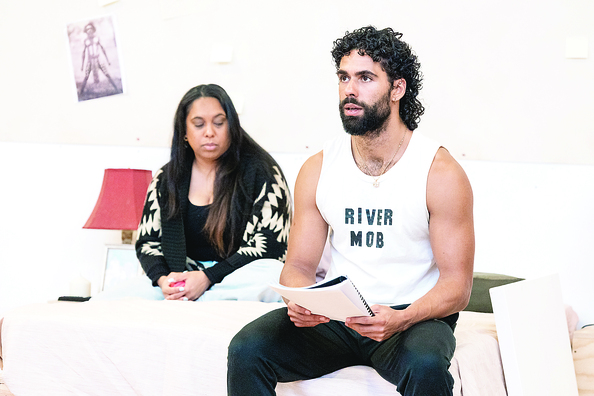By STEFAN BRADLEY
FROM writer/director Andrea James, a Gunaikurnai/Yorta Yorta woman, is a new play, The Black Woman of Gippsland – a story of Victoria’s dark past that is in dire need of revisiting, told as a thrilling modern mystery that unfolds with beauty, tragedy and rebellion.
Performances will be held at the Southbank Theatre in Melbourne and continue until May 31. It’s an ensemble, but the story is centred around the character of Jacinta.
Traditional dance and song have been incorporated into the show.
In the play, a woman is tossed ashore from the sea, bedraggled and lost. A century-and-a-half later, another finds herself diving deep into the truth behind a lingering legend.
Jacinta’s family is driving her up the wall and her academic career is floundering, but amongst the books, something doesn’t feel right about the story history tells.
The myths and half-truths that surround the figure of a ‘white woman’ said to have lived among the Gunaikurnai people of Gippsland in the 1840s are so abundant it seems the reality is out of reach. But Jacinta is determined to unearth the truth for herself and her Gunaikurnai family no matter the twists and turns the journey might take her on.
“Jacinta is a survivor. A tragic thing happened to her mother and that encouraged her to become an academic, and to uncover and find answers on this particular event that she knows has happened,” Ms James told the Express.
“It’s a classic sort of quest character story. She goes through these big emotional, traumatic, historical events in order to understand and grow from it and become a better person.”
The cast includes Chenoa Deemal as Jacinta, along with Ursula Yovich, Zach Blampied and Ian Bliss.
There are different accounts of the existence of the white woman of Gippsland. One newspaper article from The Traralgon Record in 1912 suggested she was once onboard a vessel called the Britannia, which was alleged to have wrecked on the Ninety Mile Beach in 1841.
As written on Gippsland and East Gippsland Aboriginal Cooperative’s (GEGAC) website: “The way some written histories tell it, in the 1840s a rumour began spreading through white settler communities about the existence of a white woman that was being held against her will by a group of Aboriginal people at Port Albert.”
Ms James said, “I’ve been really exploring in particular Aboriginal stories and working with other Aboriginal people for 20 years now. I’ve written a couple of plays based on my grandfather’s country. But this time around, when I got the commission at the Melbourne Theatre Company, I really wanted to do something that connected me to my grandmother’s country.”
“And I’d heard about this story about the legend of the white woman of Gippsland. It’s something that I heard about when I was quite a young girl at about 11 or 12-years-old… I just jumped at the opportunity to delve a lot deeper into the story, but also to have a chance to connect and reconnect with my grandmother’s country.
“I’m actually surprised that nobody you know had a go at this before, because it is such a fascinating story.”
She said her “ultimate goal” would be to bring the play to Gippsland, and she and the cast spent time in the region as they developed the performance.
The play is not a piece that will tell the audience whether the white woman of Gippsland is a myth or existed as a historical fact, but Ms James researched as much as possible about the subject when she started work on the show. This includes through diary and newspaper archives and speaking to as many Aboriginal and non-Aboriginal people that knew something about the subject.
“It’s a really tragic story. We don’t know whether the white woman ever existed, actually, but what we do know is that these two Gunaikurnai people were imprisoned and died as a result. Dispossession and massacres also took place during this time and as a result of the search for this white woman at this point who may or may not exist,” Ms James said.











